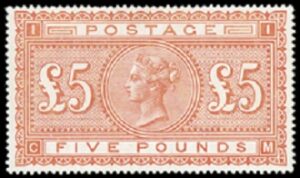 We, the aging baby boomers, have seen prices rise considerably over time. Everyone has their stories of 50c movies and 25c hotdogs. Prices and the value of money are difficult to evaluate over time. But readers of Victorian novels know that in the late nineteenth century an income of 150 Pounds a year was enough to live as a gentleman (Trollope says tartly “an embarrassed gentleman, yes, but a gentleman”). That was three Pounds a week (about $4.50) and for that a person could rent an apartment, eat, wear decent clothing, and have a part time servant.
We, the aging baby boomers, have seen prices rise considerably over time. Everyone has their stories of 50c movies and 25c hotdogs. Prices and the value of money are difficult to evaluate over time. But readers of Victorian novels know that in the late nineteenth century an income of 150 Pounds a year was enough to live as a gentleman (Trollope says tartly “an embarrassed gentleman, yes, but a gentleman”). That was three Pounds a week (about $4.50) and for that a person could rent an apartment, eat, wear decent clothing, and have a part time servant.
Before 1900, prices for food and clothing were proportionately much more expensive and labor was proportionately far cheaper than they are today. Sir Walter Scott (who wrote in the later eighteenth century) writes that in his time one could engage a servant for little more than promising to provide food, clothing, and shelter. If a middle class person in Victorian England could live a decent life for three Pounds a week then a five Pound stamp would have equivalent in spending power to a $1000 stamp today. No wonder so much trouble was taken to keep these stamps from being counterfeited or reused.
 This raises the question of what could such high value stamps possibly be used for (after all we have no stamps anywhere near this value in purchasing power today) Mainly these high value stamps were used by banks, in this era before electronic transfers, to send cash and gold to one another. The weight and value of such packages would necessitate high postage.
This raises the question of what could such high value stamps possibly be used for (after all we have no stamps anywhere near this value in purchasing power today) Mainly these high value stamps were used by banks, in this era before electronic transfers, to send cash and gold to one another. The weight and value of such packages would necessitate high postage.
But more importantly such high value stamps give collectors today a very good idea of why these stamps are so scarce. First, who could possibly have afforded five pounds to put away a mint stamp? And second, demand for these stamps must have been low because how much currency and bullion could possibly have been mailed? But it also helps us understand why so many were saved. After all, the bold design and vivid color, in addition to the huge face value, would make a collector out of anyone who came in contact with one and had an opportunity to save it. Very high proportions of these very high value nineteenth century stamps were saved. Further, used high values were in demand by early collectors and many company mail clerks throughout the world supplemented their pay by providing the used high value stamps from their company’s mail to the stamp trade.
